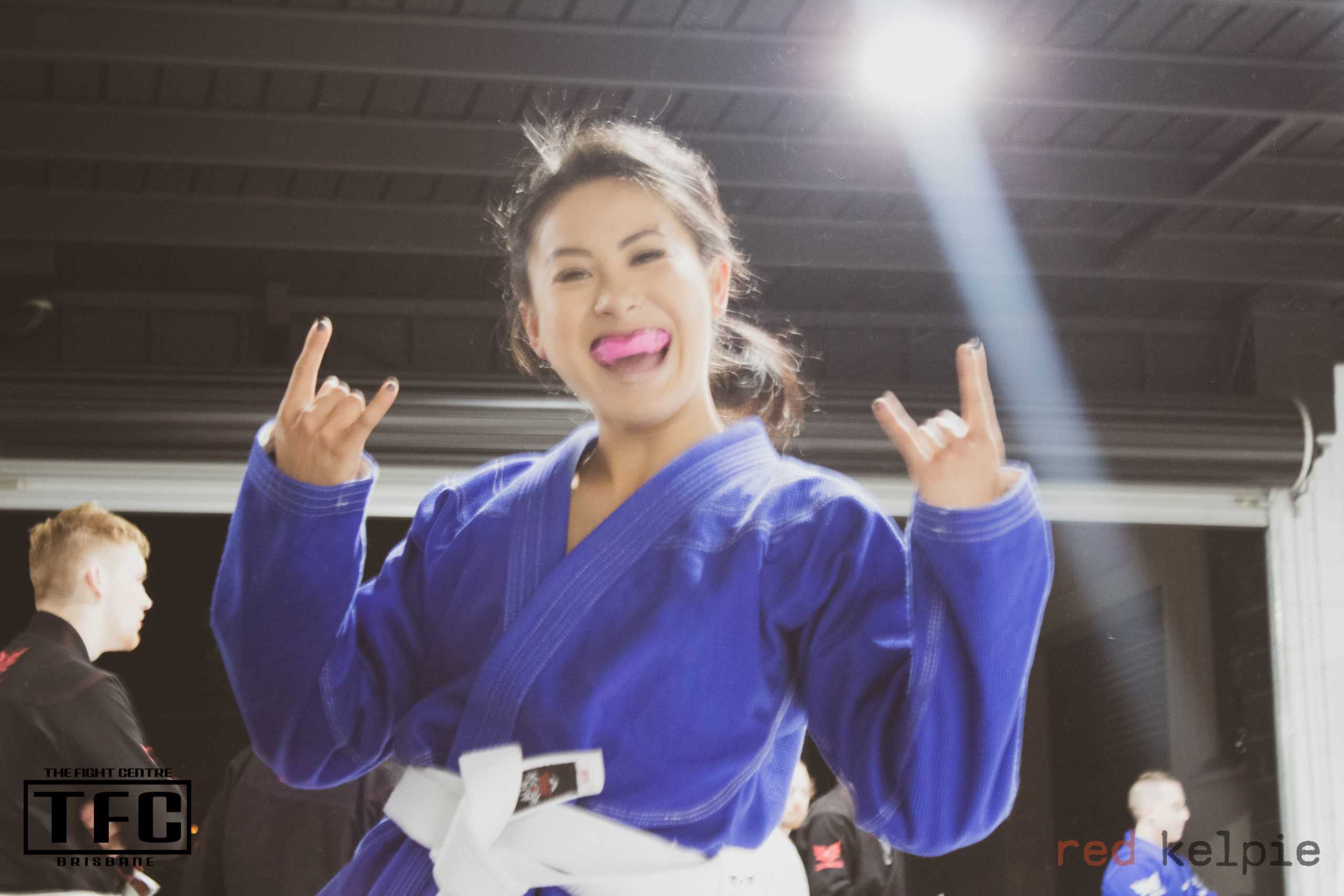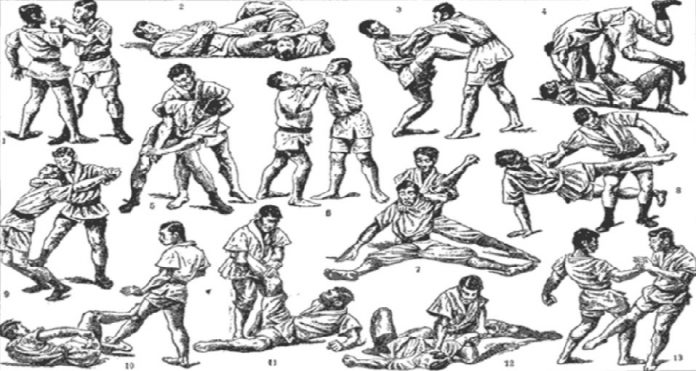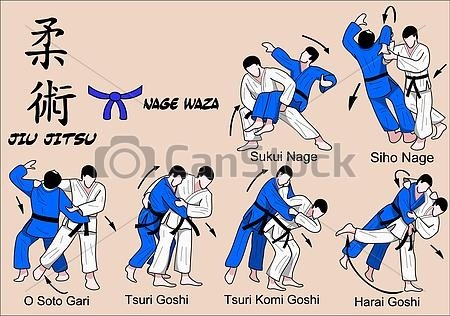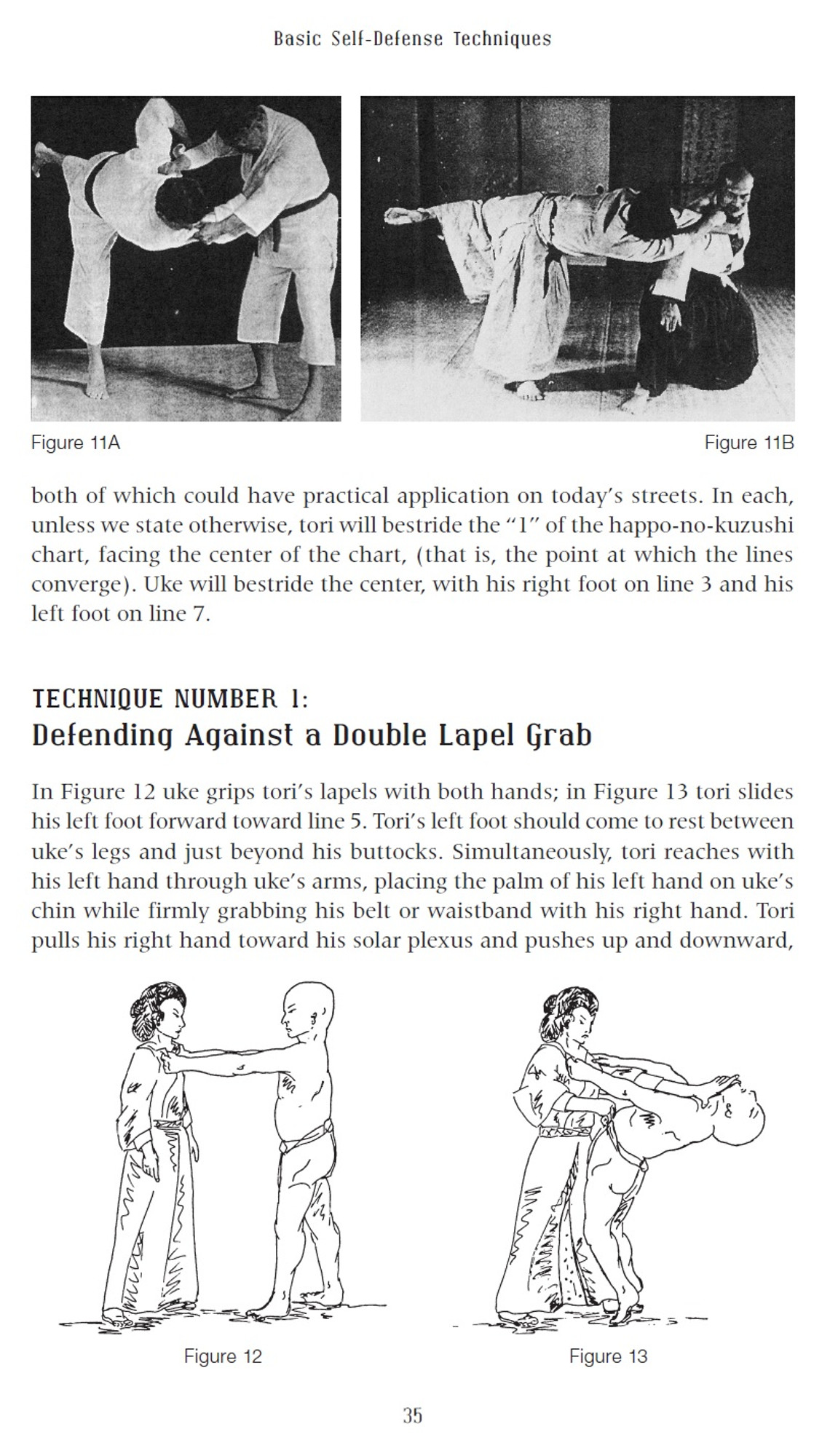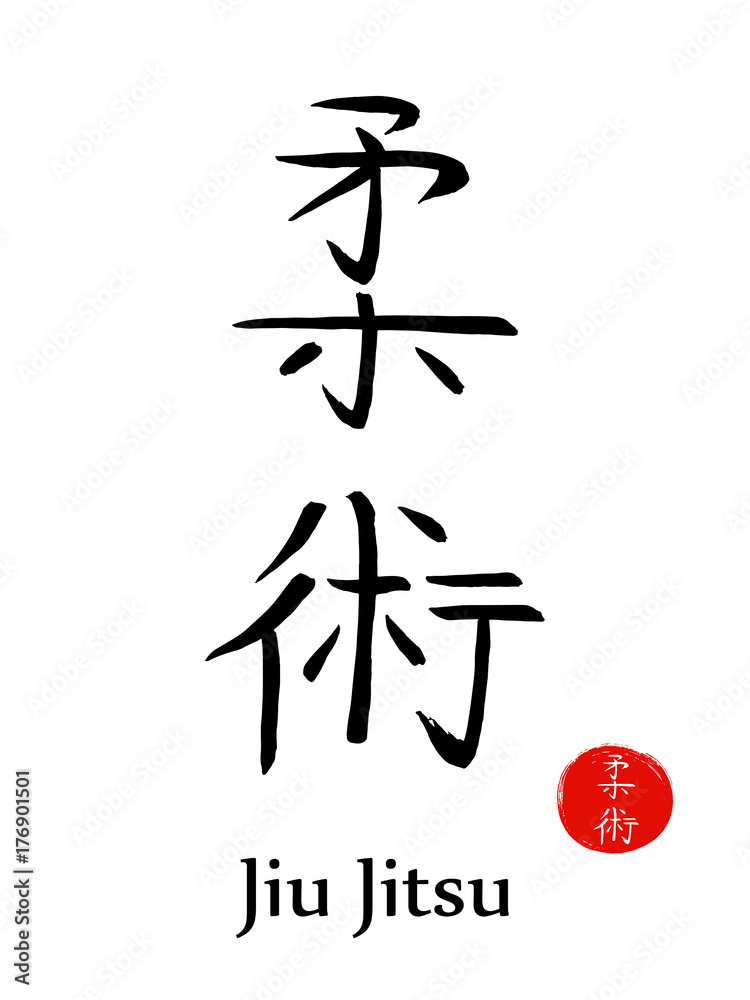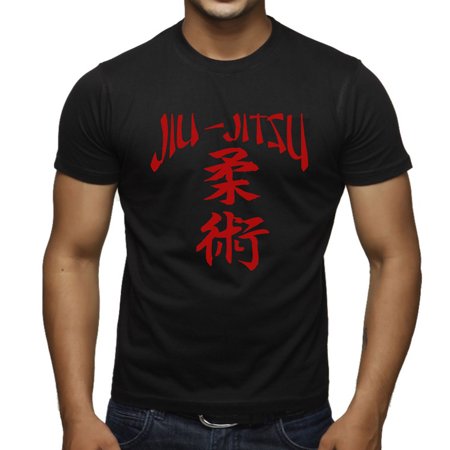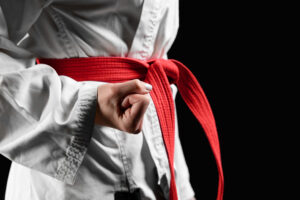Develop your martial arts skill with a complete guide to Japanese Jiu-Jitsu! Learn the basics of the sport, build strength, and defend yourself more effectively in no time.
Learn the ancient martial art of Japanese Jiu-Jitsu and become a more formidable force in combat. Perfect for self-defense, this complete guide will teach you the principles, techniques and maneuvers you need to build strength, increase agility, and defend yourself more effectively.
Learn the Common Japanese Jiu-Jitsu Techniques.
Through practice, you should develop a mastery of the common techniques and maneuvers used in Japanese Jiu-Jitsu. This includes the use of body leverage, strangleholds, throws, strikes and armlocks. You should become well-acquainted with various grips and transformations so to gain an edge in combat. Go through the basic stances such as back stance and front stance, guard position, and prone position so to adjust your base when necessary.
Understand the Principles of Positional Control.
During kumite (sparring), an important aspect of improvement is understanding the principles of positional control. This means being aware of your body in relation to your opponent’s, and using various maneuvers to gain the upper hand. You should practice functional techniques such as sweeps, takedowns and throws when possible, as well as learning how to disrupt your opponent’s base. Additionally, you should work on controlling grips that prevent their escape or submission attempts by understanding the right distance for locking down arms and legs. With practice, you will be able to respond quickly in combat situations and maintain a dominant position against escapes or retreats from your opponents.
A key part of this control is understanding the balance between active and passive positions. In an attacking phase, aim to be aggressive by closing the distance and trying to gain dominant grips on your opponent. On defense, focus on withdrawing when necessary and working towards a neutral position in which you can safely defend yourself until you find another opportunity to launch a successful attack. When it comes to jiu-jitsu, having the right mind-set is just as important as your physical abilities. As you progress through the ranks, keep these principles of positional control in mind when sparring or competing against opponents of various sizes and skill levels.
Develop Balance and Co-ordination Through Training Drills.
Practicing drills is an effective way to both understand and apply the principles of positional control. Drilling helps you develop better balance and coordination, while also making your movements more consistent and precise. Some common drills to focus on include “floating” between different postures, linking techniques, setting up sweeps from guard or side control, counters from various positions, and working on transitions between Gi grips or submissions. By regularly incorporating drills into your practice sessions, you will be able to capitalize on opportunities for movement when sparring with opponents.
Increase Endurance Through Sparring and Grappling Sessions.
To develop endurance in your jiu-jitsu, it’s important to do targeted sparring and grappling sessions. Start by doing short rounds – 1 or 2 minutes each – with active rest periods between rounds. As you become more proficient in jiu-jitsu and build up your conditioning base, slowly increase the duration of the rounds and decrease the “active rest” time. Spar with different opponents who are at different skill levels so that you can practice your technique against them while taking minimal breaks. With consistent and gradual effort you should notice a marked improvement in your physical, mental and psychological condition as well as improved striking accuracy and reflexes.
Focus on Self Defence Strategies and Combinations.
To get the most out of your jiu-jitsu practice and ensure you can effectively defend yourself, it is important to learn the fundamentals of self defence. Pay special attention to a wide array of escapes and submission combinations so that you can deactivate an attacker quickly and efficiently. Developing your knowledge of defensive strategies, counters and transitions will make a huge difference in how effective you are in sparring and help you gain more confidence when defending yourself. Make sure to practice countering specific holds or throws common attackers tend to use in order to be fully confident that you can protect yourself no matter how someone may try to attack you.
Brief History of Japanese Jujutsu
Japanese Jiu-Jitsu (JJJ) is a martial art form that dates back to the times of ancient warfare in Japan. It draws its techniques from popular Japanese martial arts such as Sumo, originating from the Nara period. One of the oldest known styles of JJJ is Shinden Fudo, which was created in 1130AD.

Japanese Jiu-Jitsu is an ancient martial art based on skill rather than strength. It’s also known as Jūjutsu, Ju-Jitsu, and Jiu-Jitsu, depending on how the word is pronounced in different languages. This “gentle art” relies on taking advantage of your opponent’s movements and strength to defend against them.
Japanese Jiu-Jitsu is an ancient form of unarmed martial arts that originated in Japan prior to the Edo period. It was developed as a method for unarmed hand-to-hand combat when warring factions reduced their use of weapons, instead opting for physical encounters.
During this time, the various styles of Jujutsu flourished and began to become popular with Japanese warriors as a way to defend themselves without relying on weapons.
Japanese Jiu-Jitsu, or JJJ for short, is a style of martial arts which has been in existence for centuries.
It was referred to as ‘jujutsu’ beginning in the 17th century and enveloped a range of different grappling ways. Even today, there are many schools known as ‘Ryu’ that have their individualized approaches and strategies.
Japanese Jiu-Jitsu (JJJ) is a martial art developed hundreds of years ago in Japan. It focuses on grappling techniques such as throws and submissions, as well as joint locks and strikes. Through the centuries, JJJ has been adopted and adapted by many different styles, some of which include Judo, Brazilian Jiu-Jitsu, Aikido, and Sambo.
Did Samurai Use Jiu Jitsu?
Jiu-jitsu originated in Japan from the Samurai warrior class as a way to train for warfare against heavily armoured opponents. It developed from early Jujutsu techniques and was used by the Samurai warriors between the 12th century and 1876, when they were abolished. Jiu-jitsu is still widely practised today and its techniques are often used in martial arts competitions.

Japanese jiu-jitsu is an ancient martial art that emphasizes the use of grappling, throws, joint locks, and chokes to defend against an attacker.
With its roots reaching back hundreds of years, Japanese jiu-jitsu practitioners realized that striking their opponents with unarmed force was often ineffective. Thus, they developed this system of incorporating grappling techniques as a means of overcoming enemies with their own power.
What Does Japanese Jujutsu Teach?
Japanese Jiu-Jitsu (JJJ) is a martial art that has been taught for centuries.
It is focused on self-defense and utilizes striking, throws, holds and joint locks. Students are graded by their level of skill and knowledge through a system of “Kyu” and “Dan” belts.
Through this learning process, students learn physical techniques as well as mental strategies to defend themselves and those around them.
Fighting Techniques
Japanese Jujitsu is an ancient martial art that focuses on both offensive and defensive techniques.
Practitioners of Jujutsu learn a variety of disciplines, including striking, throwing, joint-locking, strangulation, and other holds.
Not all schools teach the same syllabus of techniques, but most will include a wide range of hand-to-hand combat skills.
Immobilization
Jiu-Jitsu is a martial art originating in Japan which focuses on ground grappling (Gatame Waza). It emphasizes utilizing an opponent’s force and momentum against themself and covering distances by controlling an opponent’s movements to gain leverage and establish a more dominant position for self defense.
Japanese Jiu-Jitsu is a martial art practice which involves joint-locking. This technique, commonly known as Kansetsu Waza, involves dislocating or manipulating the joints of an opponent in order to take control or immobilize them. Joint locks are common tactics that have been used in combat and self-defense for many centuries and often involve attacking your opponent’s elbows, wrists, shoulders, and knees.
Japanese jiu-jitsu is an ancient martial art that has been practiced for centuries. One of its most important elements is the use of strangulation techniques, or shime waza. These techniques can be used to wear down an opponent by disrupting their air supply and render them unconscious so they could be pinned to the ground.
One of the most essential techniques in Japanese jiu-jitsu is known as Osae Waza, or pinning. This technique involves immobilizing your opponent to the ground by placing them into a disadvantageous position. The idea is that by controlling their posture and balance, you are able to easily resist an attack and hold them in place for long enough for you to move for a counterattack. It’s important to have a firm grip and maintain superior control in order to be successful with this technique.
Throwing
Japanese Jiu-Jitsu is a martial art based on grappling and throwing techniques known as Nage Waza. It originated in the late 19th century as a hybrid of traditional Japanese forms of unarmed combat such as jujutsu, judo and karate. Today, it is widely practiced both competitively and recreationally. Jiu-Jitsu focuses on joint locks, chokes, throws, strikes and other techniques to control the opponent while avoiding harm or injury.
Japanese Jiu-Jitsu is a martial art that emphasizes grappling, submission holds, and striking techniques. One important component of Japanese Jiu-Jitsu are break-falling techniques known as Ukemi Waza, which are designed to reduce the impact of falling and to prepare for future attack or defense moves.
Striking and Defense
Japanese jiu-jitsu includes a number of striking techniques known as Atemi Waza. These techniques involve strikes to certain parts of an opponent’s body in order to disrupt their balance and create an opening for the practitioner to take the advantage.
Japanese Jiu-Jitsu is an ancient martial arts form which combines attacking, defending, and restraining techniques. It is based on the principles of redirecting force, momentum and energy and is often referred to as the “gentle art” since it uses minimal strength and power in order to control an attacker. Blocking and parrying are fundamental defensive strategies used in Jiu-Jitsu training.
Japanese Jiu-Jitsu is a martial art that focuses on using posture, leverage, and correct technique to control opponents through submission. It is comprised of a range of positioning techniques, grips, locks and throws as well as joint manipulations in order to immobilize an attacker or force them into submission.
Japanese Jiu-Jitsu (JJJ) is a martial art that emphasizes the use of grappling, ground fighting and submission moves. It includes a range of techniques, from striking to joint locks to chokes. The goal is to gain control over your opponent by taking them to the ground and then keeping them there until you have gained control or escaped from the situation. Some schools focus solely on unarmed forms of JJJ, while other schools include weapons training.
Theoretical Knowledge JJJ
Japanese Jiu-Jitsu is a martial art originating in Japan. It is a system of hand to hand combat and self-defense that utilizes technique over strength, utilizing throws, joint locks, strikes, and pins to defeat one’s opponent. As students progress through their training they will not only gain physical skills but also an understanding of Jujutsu’s theory through reading and writing assignments. The breadth of knowledge gained gives practitioners the mental capacity they need for any fight situation.
Japanese jiu-jitsu is an ancient martial art that dates back centuries. It originated in Japan as a form of self-defense and has grown ever since, eventually spreading to other countries. Jiu-jitsu is a grappling art based on using leverage, balance and timing rather than brute strength to control an attacker. Students work not only with their bodies through physical techniques, but also with their minds by learning how to be aware of their surroundings and make split second decisions.
Japanese Jiu-Jitsu is a traditional martial art that dates back centuries and has developed over time. It is composed of three core elements – striking, throwing, and grappling. Practitioners of the art are referred to as “jiu-jitsuka” and they can use various techniques such as joint locks, combination holds and strikes, throws, arm locks and chokeholds. A variety of Japanese terms are used to describe specific moves or sequences such as “gyaku”, meaning reverse; “guruma”, meaning wheeling motion; and “hikiwaza”, meaning pulling technique.
The core theory behind Japanese Jiu-Jitsu is to use an opponent’s energy against them rather than meeting physical force with physical force. This is achieved by redirecting the energy of an attack and using it to defeat the attacker. To do this, various wrestling techniques, throws, joint locks and chokes are used to achieve a desired result against an opponent.
Japanese jiu-jitsu is a traditional martial art that focuses on the use of physical movement, leverage, and positioning to control an opponent. It has its roots in ancient battlefield combat strategies, developed over centuries by samurai warriors. A practitioner must understand body anatomy and physiological principles in order to effectively practice jiu-jitsu. This knowledge can help practitioners defend themselves against larger opponents by taking advantage of practical strength and body mechanics.
Japanese Jiu-Jitsu is a traditional martial art that originally developed in feudal Japan, and has since become a popular form of self-defense across the globe. Japanese Jiu-Jitsu incorporates body movement, striking, joint locks and throws. As well as being an effective form of combat, it has also been used as a tool for helping to heal physical injuries, as one of its core principles is to utilize the opponent’s strength against them. It also emphasizes an understanding of how the body works and incorporates elements of first aid, healing arts and other methods for physical recovery.
Is Japanese Jujutsu Effective in a Street Fight?
Japanese Jiu-Jitsu is a valuable martial art for defending oneself in a street fight. It offers techniques for striking, defending and the ability to provide first aid if the situation requires it. Not only does it give you the skills to survive an attack, but it also improves balance, coordination and strength.
Japanese Jiu-Jitsu (JJJ) is a form of martial arts that emphasizes self-defense. It uses techniques like joint locks, chokeholds and throws to allow the defender to control their attacker without seriously harming them. However, it can be difficult to ensure that no one gets hurt, particularly for throws which could lead to head injury or death in some cases. Thus, avoiding serious injuries should always be the top priority in any confrontation.
What is the Major Difference between BJJ and JJJ?
Japanese Jiu-Jitsu (JJJ) is the art that Brazilian Jiu-Jitsu (BJJ) was derived from. However, there are a few differences between the two martial arts which set them apart. Some of these distinctions include differences in technique, speed, and style of movement.
Purpose of japanes Jiu Jitsu
Japanese jiu-jitsu (JJJ) is a martial art that originated in 19th century Japan for the purpose of self defense and warfare. It consists of grappling techniques including throws, joint locks, holds, immobilizations and chokes which are designed to disarm and weaken an attacker. Brazilian jiu-jitsu (BJJ) evolved from JJJ, by focusing more on self defense than offense. The emphasis is on controlling your opponent without inflicting serious harm while neutralizing their attack.
Techniques
Japanese Jiu-Jitsu (JJJ) is a martial art form that has hundreds of techniques, grouped into categories, for self-defense and ground fighting. In contrast to Brazilian Jiu-Jitsu (BJJ), JJJ does include striking and throwing techniques in its arsenal. Additionally, BJJ contains over 600 recognized techniques and does not stress striking or throwing as part of its repertoire.
Japanese Jiu-Jitsu, or BJJ, is a martial art form focused on using gentle but powerful holds and throws. It emphasizes the use of leverage and technique to control an opponent without causing serious injury. Techniques are divided into either chokeholds or joint locks, and practitioners practice sweeps to bring an opponent off their feet rather than throwing them.
Ebo No Kata Jiu Jitsu curriculum
Belt System and Grading
Japanese Jiu Jitsu (JJJ) is a martial art that has its roots in medieval Japan and includes both striking and grappling techniques for self-defence. Most JJJ schools focus their classes around teaching the coloured belt system devised by Jigoro Kano, which includes 10 Kyu (or coloured belts) and Dan (black belts). However, some JJJ schools forego the belt system completely in favour of student progression.
To advance to the next belt in Japanese Jiu-Jitsu (JJJ), a student must first demonstrate their practical knowledge of the martial art and its techniques before an assessor. They must also provide evidence of their understanding of the theoretical elements tied to that particular belt level.
Japanese Jiu-Jitsu, known as BJJ, follows a system of belt rankings in order to indicate levels of mastery. A student can progress from a white belt to a black belt over the course of their learning. Between those two ranks lie four colored belts (green, blue, purple, and brown), each comprised of four individual “stripes”, or sub-level promotions. Promotions are at the discretion of the instructor and are awarded when they feel the student has sufficiently mastered the techniques being taught.
Competitions
Japanese Jiu-Jitsu (JJJ) is much more than a sport; it is a way of life. It teaches its practitioners discipline, respect and understanding of many aspects of the art. Those who engage in sport jiu-jitsu competitions must abide by a set of rules that restrict techniques such as kicks to the legs or strikes to the face.
Japanese Jiu-Jitsu, known as Jujutsu or Jujitsu, is a martial art that has been around for centuries. It focuses mainly on grappling techniques such as throws, joint locks and pins. Unlike Brazilian Jiu-Jitsu (BJJ) which focusses on competition, Japanese Jiu-Jitsu practices non-violent forms of self defense meant to help students develop physical and mental strength.
Which Is Better BJJ or Japanese Jujutsu?
Japanese Jiu-Jitsu dates back centuries, and its techniques focus on grappling and controlling an opponent without causing harm. It is known for being more theoretical than Brazilian Jiu-Jitsu, which makes it more suited to self-defense against situations where there might be multiple opponents or weapons involved. While Japanese Jiu-Jitsu itself does not teach techniques to defend against weapons, the skills learned can be applied to a variety of different scenarios.
Japanese Jiu-Jitsu (JJJ) is a martial art that has origins in the ancient Samurai and Sumo cultures of Japan. While it shares many of the same principles and techniques as Brazilian Jiu-Jitsu, it includes more than just grappling. JJJ practitioners can also learn proper striking techniques, as well as expand their knowledge about Japanese culture, human anatomy and treatment for injuries. For those looking to learn both offense and defense, or gain a broader understanding of Martial Arts and Japanese culture, Japanese Jiu-Jitsu is an excellent choice!
Are Weapons Used in Japanese Jujutsu?
Japanese Jiu-Jitsu is an unarmed martial arts form, which was developed during 17th century Japan. It is mostly focused on hand-to-hand combat and due to weapon-ban laws at the time, it saw steady growth in popularity. Some weapon based techniques were still included in this style of martial art like those mentioned below.
Japanese jiu-jitsu is a martial art that focuses on leverage and technique, rather than the use of weapons. It originated in Japan several centuries ago and has evolved over time to become a highly effective form of combat. This unarmed style relies heavily on grappling moves, such as joint locks and throws, along with strikes, throws, and submission holds. Jiu-Jitsu was first developed by samurai warriors as a means of defending themselves against sword attacks since they were not allowed to wear weapons in public places.
Japanese Jiu-Jitsu is a traditional martial art of Japanese origin that dates back to the late 16th century. It is often referred to as ‘the gentle art’, as its primary focus is on using one’s opponent’s force against them rather than relying on physical strength and aggression. Jiu-Jitsu practitioners use joint locks and throws, in addition to wooden staffs and swords, to defend themselves from their opponents.
Japanese jiu-jitsu is a martial art and combat sport that originated in Japan, originally developed as a method of self-defense. It utilizes techniques of leverage and balance to defeat an unarmed or armed opponent without the use of weapons such as swords, spears, or other traditional Samurai weapons. The focus of Japanese jiu-jitsu is on grappling and joint locks, which allow for body control and submission holds rather than strikes.
Japanese Jiu-Jitsu is an ancient martial art form and a combat system that uses joint manipulation, throws, holds and other grappling techniques to defend oneself or another. It utilizes the use of minimal strength with the leverages of body positioning to control an opposing person using joint locks and chokeholds. The practice of jiu-jitsu also involves the use of kimono uniforms called Gi, and Judo belts to signify proficiency in the sport/art.
Japanese Jiu-Jitsu is a martial art that focuses on the use of throws, joint locks, and striking to neutralize opponents. It has roots in ancient samurai combat techniques and is one of the founding martial arts for many modern fighting systems. While many JJJ schools may not include weapons in their curriculum, there are still some schools that will train students how to defend against them as well as how to safely employ small weapons when necessary.
Is Japanese Jujutsu Still Practiced Today?
For centuries, Japanese Jiu-Jitsu has been practiced, gaining in popularity across the globe. There are numerous schools of Jiu-Jitsu known as ‘Ryu’, with many senior instructors having trained or studied in Japan or with a master from Japan. Typically each school focuses on its own style, such as Takenouchi-Ryu – one of the most ancient types of Japanese Jiu-Jitsu.
Japanese Jiu-Jitsu (JJJ), an ancient form of self-defense, has become increasingly popular in recent years due to the spread of instructional videos available on the internet. Through instructional recordings, JJJ has been made accessible globally and can be learned by those without a local school or teacher nearby.
Japanese Jiu-Jitsu (JJJ) is an ancient martial art that has been around for centuries. Its main purpose is to offer a means of self-defense, while also instilling discipline, respect, and mindfulness in its practitioners. In addition to learning the physical techniques of JJJ, practitioners strive to develop an understanding of the deeper philosophical principles behind this martial art.
Final Thoughts about Japanes Jiu-Jitsu
Japanese Jiu-Jitsu is a form of martial arts that focuses on using joint locks and holds to disable opponents. This style relies heavily on technique rather than strength or power, allowing smaller combatants to effectively overpower larger ones. Though it shares many similarities with Brazilian Jiu-Jitsu, there are several key differences that martial artists should take note of when considering which form of Jujutsu to study.
Best japanese Jiu-Jitsu Resources
Japanes Jiu Jitsu Videos
Jujutsu News
Japanese Jiu Jitsu - Ancient Japanese Jujutsu JJJ - LowKick MMA
December 19, 2022 - LowKick MMADiscover the art of Japanese Jujutsu
NYE in Japan: Inside combat sports' wildest annual event - ESPN
December 29, 2022 - ESPNIf you like martial arts you are going to love this
Beaches, Nunchucks, and Jiu-Jitsu: 5 Takeaways From 5 Days In ... - FloGrappling
January 13, 2023 - FloGrapplingCheck out all days of Jiu-Jitsu japanese style
Paul is a 44 year old Online Marketeer and Dad to a beautifull daughter who started Judo and Japanese Jiu Jitsu.
After a few lessons Paul joined a class where the parents where allowed to go on the mat with the kids.
Since then Paul is hooked and he immediately started immerging himself in the world of martial arts.

